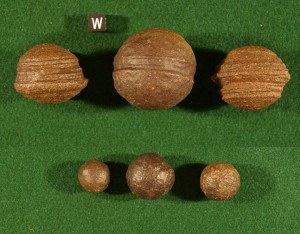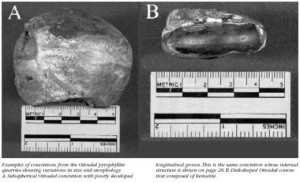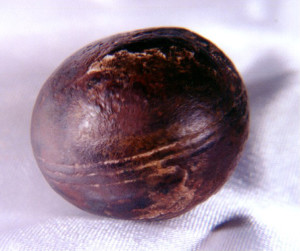Klerksdorp spheres the product of mother nature or human intelligence?
 This is a question that has been asked since the discovery of the South African spheres who according to researchers are 2.8 billion years old. The spheres are elliptical in shape with rough ridges around the center. These spheres are balanced in shape and design with features on their surface that some attribute to intelligent design.
This is a question that has been asked since the discovery of the South African spheres who according to researchers are 2.8 billion years old. The spheres are elliptical in shape with rough ridges around the center. These spheres are balanced in shape and design with features on their surface that some attribute to intelligent design.
According to Michael Cremo (Michael A. Cremo (born July 15, 1948), also known by his devotional name Drutakarm? d?sa, is an American freelance researcher who identifies himself as a Vedic creationist and an “alternative archaeologist”) and other researchers of prehistoric culture, these spheres add to a body of evidence suggesting intelligent life existed on Earth long before a conventional view of history places it here.
According to John Hund, the spheres were submitted for testing at the California Space Institute where researchers concluded based on the tests performed on the spheres, that the balance “is so fine, it exceeded the limit of their measuring technology.” It was “within one-hundred thousandths of an inch from absolute perfection.” This statement was later subtracted by the California Space Institute which denied that anyone told Hund that the object had the extraordinary properties. According to their statement, there have been “some error in transmission” and that Hund had completely misunderstood the information regarding these objects.
Various “researchers” have tried coming forward claiming extraordinary properties in these spheres, but to back up these claims, a significant amount of scientific research needs to be performed on the spheres to conclude and state anything. According to research performed on the spheres, they are found in pyrophyllite a secondary mineral which is quite soft. The spheres have a fibrous structure in the interior with a shell around them. The spheres are very hard and according to researchers it is nearly impossible to scratch them. According to Roelf Marx, curator if the museum of Klerksdorp, South Africa, the spheres are harder then Steel but more research is needed as there are no scientific papers that have been published concerning the globes. The size of the spheres varies over a relatively small range, going from a few millimeters to several centimeters and can be found as large as 10 cm in diameter.
There have been claims that these spheres have a power of rotation, where individuals claimed that the Ottosdal objects had rotated in their museum cases. This according to the museum is false. Vibrations from underground blasting in local gold mines regularly vibrated the museum’s display cases and caused the Ottosdal objects to rotate and it is clear that the claim that these objects rotated under their own power is completely false.
But are they man-made or the result of mother nature? Researchers have debated the origin of these strange objects for years. Some say that they formed in a natural process called concretion. A concretion is a hard, compact mass of matter formed by the precipitation of mineral cement within the spaces between particles, and is found in sedimentary rock or soil. Concretions are often ovoid or spherical in shape, although irregular shapes also occur.
The spheres found in South Africa are inconsistent in shape, meaning that even though there are elliptical spheres with rough edges there are some that are balanced in shape and proportion making the debate between two theories continue until conclusive evidence is presented by either side.
Even though several researchers have claimed that these objects- also called “Spheres” of Ottosdal, are spherical objects according to new research they are neither spherical in shape nor perfectly round.



[…] Republished kindly from: http://paranormalx.net/2-8-billion-year-old-spheres-africa/ […]